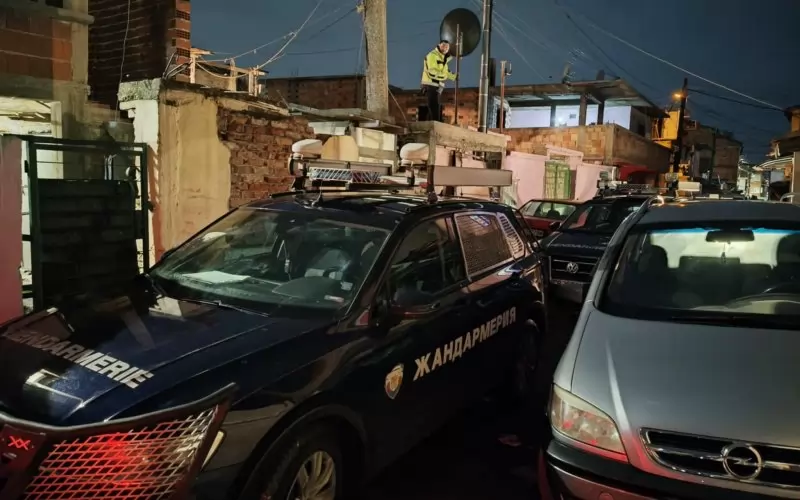Several French newspapers report on the latest publication of the National Commission for Human Rights (CNCDH). The commission concludes that racism in France is in overall decline, but that it has become more insidious, subtle and sneaky as a result. Christine Lazerges, the president of the commission, concludes: “In the long view, racism in France decreases, the time of the riots is long gone, but the racism that is propagated today is much more insidious and no longer limited to the extremist edges. It pervades all strata of society. […] The scapegoats today are particularly Rroma, who are stigmatized, including from the government, and then the Arab Muslims.” Whether the time of racially motivated riots actually belongs to the past may be doubted. Marches of right-wing groups against ethnic minorities such as the Rroma regularly take place in several Eastern European countries. The results of a recent survey, mandated by the commission, makes clear that negative stereotypes towards the Rroma are persisting in the minds of many people. 85% of the thousand respondents said that they believed that Rroma often exploit children and 78 % that they live of theft and the black market. In addition, the suspicion towards anti-racism actors is said to be significant. The commission recommends to continuously foster the education of the population, because it has been shown that there is a clear link between educational alienation and racism. The commission’s authors acknowledge that the Rroma are a heterogeneous group and are not belonging to a homogeneous culture or a single religion. However, they mistakenly assume that the Rroma live in France only since the early 20th century (CNCDH 2014: 201). However, they appear in France in early chronicles since the beginning of the 15th century. Tassel (2014) emphasizes the particular context in which the book is published. On the weekend of March 30th, the right-wing nationalist National Front, which bases significant parts of its policies on xenophobia, achieved a new high in the electorate. In addition, a new Prime Minister, Manuel Valls, has been inaugurated. He is notorious for his repressive policies towards the Rroma. The commission also emphasises the distinction between visible and invisible Rroma, a differentiation that has been fostered by the Rroma Foundation for quite some time: “Only a small minority of the Rroma define themselves in this way – between 15,000 and 20,000, who generally originate of a recent immigration from Bulgaria and Romania – live in a very large uncertainty, that means in the slums. The others are not “visible” and do not live in a state of extreme poverty. The vast majority consists of Gens du voyage, an estimated 350,000 people” (CNCDH 2014: 201-202). This view is contradicted by Tcherenkov/Laederich (2004: 4, 513), who make a clear distinction between travellers of European origin and Rroma. The latter are almost invariably not travelling and belong to the groups of the Manouche, Sinti, Gitans, Kaldersha, Lovara and Yugoslav Rroma (20 minutes 2014, La Croix 2014, CNCDH 2014, Tassel 2014, Vincent 2014).
- 20 minutes (2014) La parole raciste se banalise, surtout contre les Roms et les musulmans. In: 20 minutes online vom 1.4.2014. http://www.20minutes.fr/societe/1339949-liberation-de-la-parole-raciste-en-2013-surtout-contre-les-roms-et-les-musulmans
- La Croix (2014) Banalisation de la parole raciste, surtout contre les Roms et musulmans. In: La Croix online vom 1.4.2014. http://www.la-croix.com/Actualite/France/Banalisation-de-la-parole-raciste-surtout-contre-les-Roms-et-musulmans-2014-04-01-1129720
- Commission nationale consultative des droits de l’homme (CNCDH) (2014) La lutte contre le racisme, l’antisémentisme et la xénophobie. Anée 2013. In: http://www.scribd.com/doc/215668601/CNCDH-Racisme-2013-Basse-Def-1
- Tassel, Fabrice (2014) La perception des étrangers en France se dégrade. In: Libération online vom 1.4.2014. http://www.liberation.fr/societe/2014/04/01/la-perception-des-etrangers-en-france-se-degrade_992287
- Tcherenkov, Lev/Laederich, Stéphane (2004) The Rroma: otherwise known as Gypsies, Gitanos, Gyftoi, Tsiganes, Tigani, Çigene, Zigeuner, Bohémiens, Travellers, Fahrende etc. Basel: Schwabe Verlag.
- Vincent, Elise (2014) Les Français sont de moins en moins tolérants. In: Le Monde online vom 1.4.2014. http://www.lemonde.fr/societe/article/2014/04/01/l-intolerance-et-l-inquietude-a-l-egard-des-minorites-ne-cessent-de-s-accroitre_4393374_3224.html







